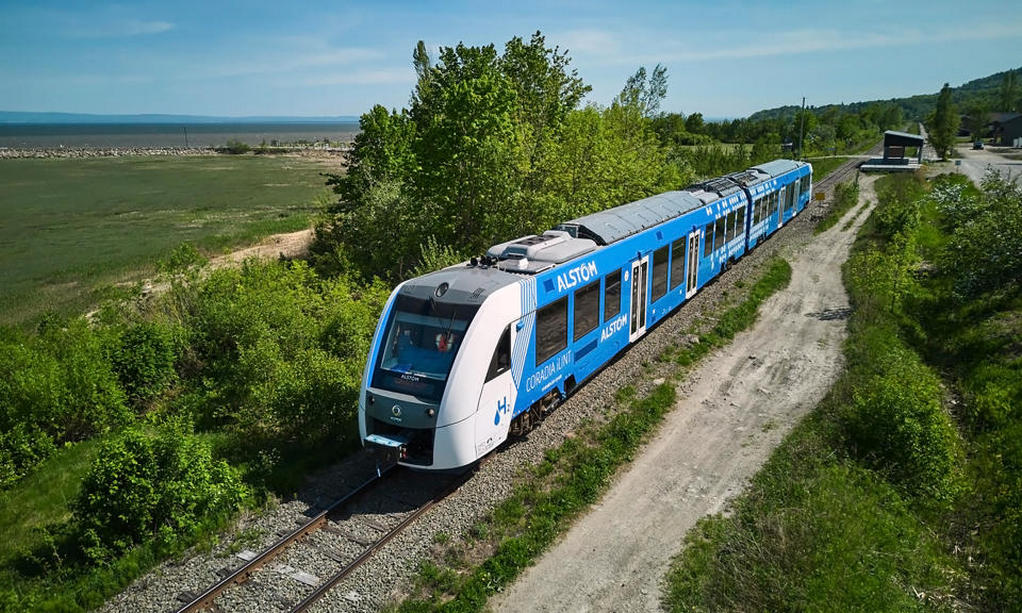The first hydrogen-powered train in North America is taking riders on a two-and-a-half hour trip through central Quebec this summer.
The tourist train made by French company Alstom runs from Montmorency Falls in Quebec City to Baie-Saint-Paul — partway along the Train de Charlevoix route — on Wednesday through Sunday until Sept. 30, carrying up to 120 people in two rail cars.
The train uses about 50 kilograms of hydrogen a day, estimates Serge Harnois, CEO of Harnois Énergies, which supplies the fuel. That replaces about 500 litres of diesel that would be burned during the journey.
The same model of train, known as the Coradia iLint, has previously carried passengers in eight European countries. Germany, purchased a version which uses Canadian-made fuel cells for a hydrogen-only route last year.
Alstom said this week that the commercial operation of the train will allow it and its partners to see what’s needed to develop “an ecosystem for hydrogen propulsion technology” in North America.
Harnois Énergies, based in Quebec City, produces the hydrogen using an electrolyzer, which splits water into hydrogen and oxygen using electricity. Because the electricity is from Hydro-Quebec — which is 94 per cent hydro-generated, five per cent by wind and almost fully decarbonized — the resulting hydrogen is considered green.
Alstom approached the company to supply hydrogen as it was able to bring the gas to the pressure needed for the purposes of this project.
Tags: Canada, Hydrogen, Train



Recent Posts
Port of Brisbane Unveils Vision 2060 to Drive Smarter, Cleaner, and More Connected Future
Wärtsilä to Deliver Hybrid Propulsion Systems for Vertom Group’s New Low-Emission Vessels
Latvian port receives electric Konecranes Gottwald Mobile Harbor Crane
Sustainable Ocean Economy Vital for Human Development, Says UNDP at UN Ocean Conference
Green Hydrogen Costs in India Could Drop by 40%, Says IEEFA-JMK Report
Cavotec Secures €1.55 Million Shore Power Contract for Port of Antwerp-Bruges
APM Terminals and SANY Marine sign landmark agreement to accelerate decarbonisation
The Port of Gothenburg takes big step towards shore power connection for container and car/RoRo vessels